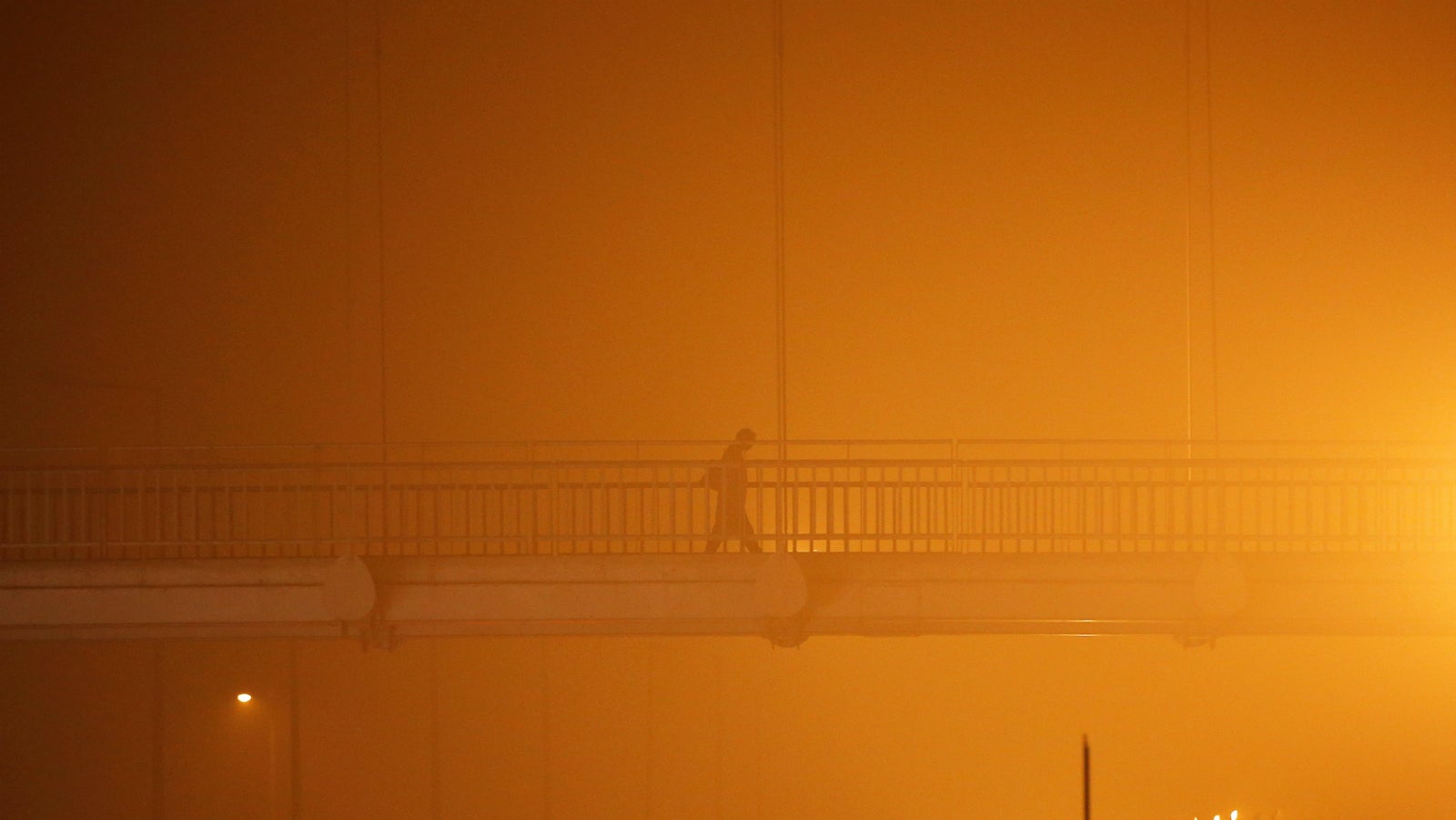Toxic air is draining the Indian economy of trillions of rupees
Bad air is bad news for India’s economy.


Bad air is bad news for India’s economy.
To be precise, the health cost of the alarming levels of air pollution on Indians is estimated at 3% of India’s GDP. The total damage caused by environmental degradation (pdf) amounts to Rs3.75 lakh crore annually, which is about 5.7% of its GDP in 2009.
These estimates were presented before the Lok Sabha, the lower house of the Indian parliament, by minister of state for health and family welfare Anupriya Patel on Dec. 09, citing a 2013 World Bank report. The report calculated the cost of outdoor and indoor air pollution, degradation of croplands and forests, inadequate water supply, and sanitation.
India’s pollution woes have since only grown. Its urban centres have been struggling in recent years. Half of the world’s top 20 polluted cities are in India, according to a July study by the World Health Organisation. These include Gwalior in Madhya Pradesh, Allahabad in Uttar Pradesh, and India’s capital Delhi. In November, soaring pollution levels sparked panic in Delhi, forcing some 5,000 schools to shut down temporarily.
India loses close to half-a-million people annually to pollution-related deaths, particularly those caused by cardiovascular diseases, lung cancer, and stroke.
The pollution mess in India has various contributors, including vehicular emission, industrial activities, and crop burning. Residents of Delhi, Mumbai, and Gwalior are exposed to alarming levels of particulate matter—a combination of smoke, soot, and pollen that is harmful to health.
Patel informed the Lok Sabha that the government is making efforts to curb pollution “by formulating environmental regulations, setting up of monitoring network for assessment of ambient air quality, and promoting cleaner production processes.”